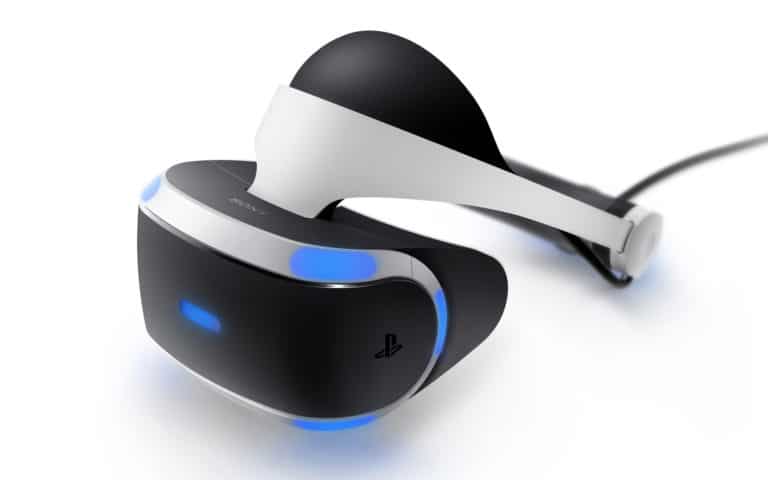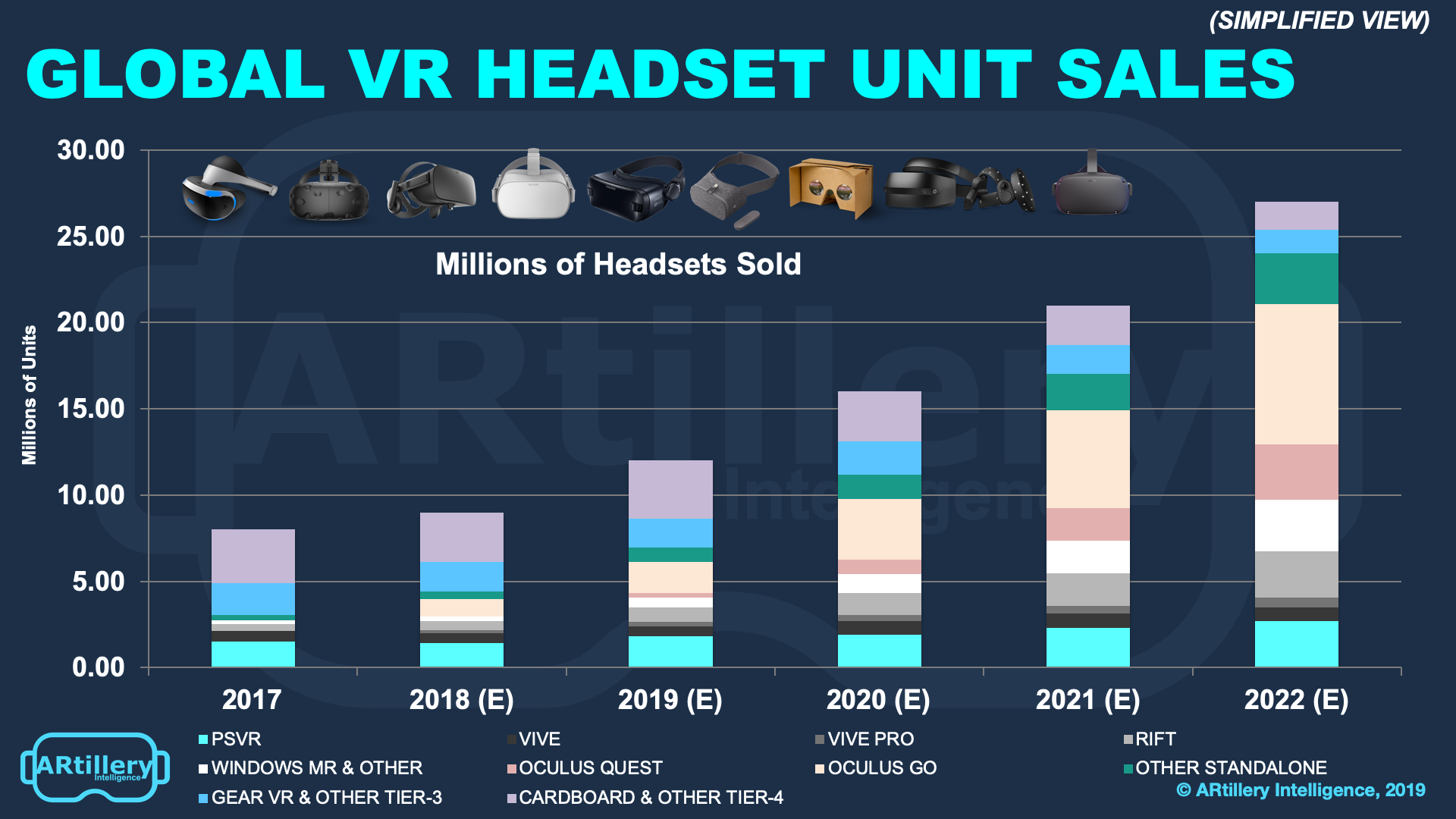
Data Point of the Week is AR Insider’s dive into the latest spatial computing figures. It includes data points, along with narrative insights and takeaways. For an indexed collection of data and reports, subscribe to ARtillery Pro.
Sony is the market share leader for VR hardware revenues according to the latest report from Strategy Analytics. Specifically, the firm pegs PSVR’s revenue share at 30 percent. That’s followed by Oculus (presumably all variants) at 25 percent and HTC (same) at 22 percent.
Collectively, the high end of the market accounts for 77 percent of revenues, compared with the receding class of mobile VR headsets. That includes Google (11 percent) Samsung (5 percent) and others (6 percent). Google saw the biggest YoY drop from 21 percent to 11 percent.
The downward trending among mobile VR isn’t surprising as Google is backpedaling its Daydream support and Samsung has long-discontinued its Gear VR giveaways with new Galaxy phone purchases. In fact, the new Galaxy Note 10 isn’t even compatible with Gear VR.

Mobile VR’s retraction also comes at a time when Oculus aggressive pricing brings the far superior Oculus Go within the same price range. The same pricing strategy applies at the higher end to Oculus Quest, which is already showing strong sales according to our estimates.
Speaking of Oculus Quest, as we examined this week, its strategy is a departure from the specs-driven approach of high-end VR. It’s instead building the product and its marketing around an “experience sell,” for an overall fun product — despite spec compromises — that’s affordable.
And that brings us back to the market-leading PSVR. The affordability and “experience-sell” have comprised its strategy all along, and its consistently been in the lead with about 5 million cumulative units sold as of June. The installed base of 100 million PS4s has also helped.

But this is where Quest can do some damage. With the cheaper experience-sell strategy that rivals PSVR, it’s likewise an “all-in” purchase. Just like PSVR owners don’t have to buy a PC to run PSVR, Oculus Quest’s standalone orientation is the same, not to mention greater portability.
So Quest and PSVR are essentially the betting favorites for the next year of VR’s market-share horse race. PSVR has better specs but less portability. Game libraries and switching cost favor PSVR, but Quest is catching up with 50 games out of the gate and 100 by year-end.
“Oculus seems to be betting that people will be happy with a convenient, lower-powered headset that plays a smaller number of games,” said the Verge’s Adi Robertson. “Sony [PSVR] is making the same play… Oculus could tap into that market with something that’s even more convenient.”

Meanwhile, Strategy Analytics’ figures are consistent with the projections of our research arm ARtillery Intelligence. Its PSVR revenue share figure is likewise 30 percent. And its projected $2.02 billion (see above) VR hardware revenues are close to Strategy Analitics’ $1.8 billion.
But the proof will be in the next 12 months of sales, including the 2019 holiday period. Just like we said last year for Oculus Go, that could be a moment of truth for Quest, given its semi-giftable price point. Either way, we’re bullish on the device if its initial sales are any indication.
We’ll be watching closely for clues of market share gains across the board and, more importantly, their strategic implications.
For deeper XR data and intelligence, join ARtillery PRO and subscribe to the free AR Insider Weekly newsletter.
Disclosure: AR Insider has no financial stake in the companies mentioned in this post, nor received payment for its production. Disclosure and ethics policy can be seen here.
Header Image Credit: Sony
